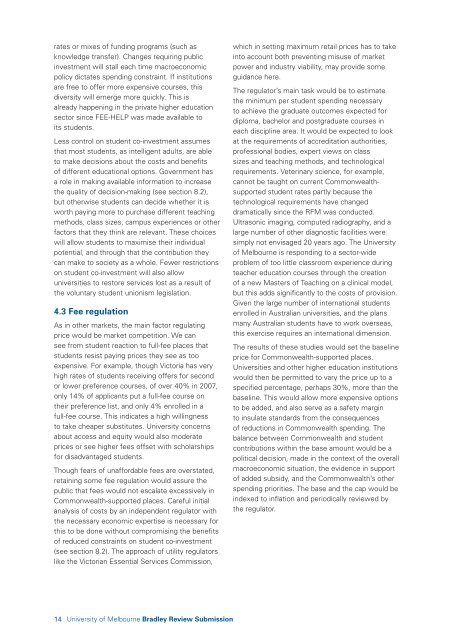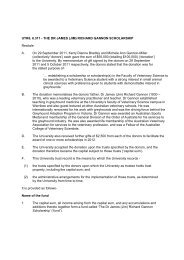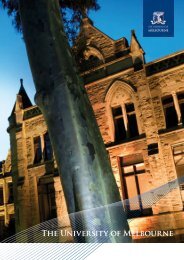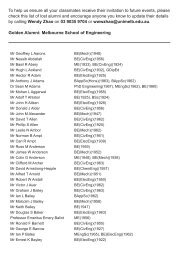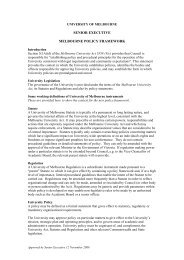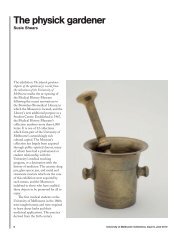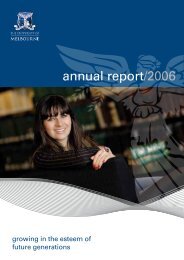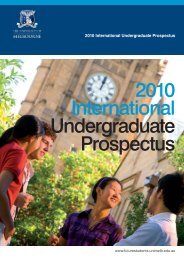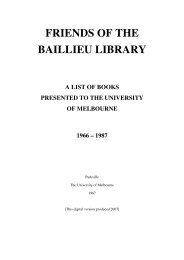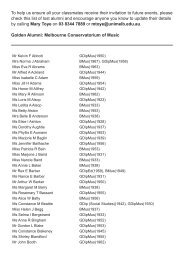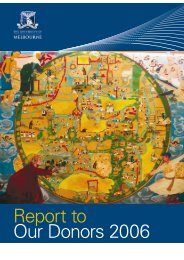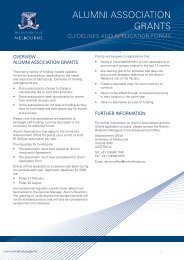Review of Australian Higher Education The Bradley Review
Review of Australian Higher Education The Bradley Review
Review of Australian Higher Education The Bradley Review
Create successful ePaper yourself
Turn your PDF publications into a flip-book with our unique Google optimized e-Paper software.
ates or mixes <strong>of</strong> funding programs (such as<br />
knowledge transfer). Changes requiring public<br />
investment will stall each time macroeconomic<br />
policy dictates spending constraint. If institutions<br />
are free to <strong>of</strong>fer more expensive courses, this<br />
diversity will emerge more quickly. This is<br />
already happening in the private higher education<br />
sector since FEE-HELP was made available to<br />
its students.<br />
Less control on student co-investment assumes<br />
that most students, as intelligent adults, are able<br />
to make decisions about the costs and benefits<br />
<strong>of</strong> different educational options. Government has<br />
a role in making available information to increase<br />
the quality <strong>of</strong> decision-making (see section 8.2),<br />
but otherwise students can decide whether it is<br />
worth paying more to purchase different teaching<br />
methods, class sizes, campus experiences or other<br />
factors that they think are relevant. <strong>The</strong>se choices<br />
will allow students to maximise their individual<br />
potential, and through that the contribution they<br />
can make to society as a whole. Fewer restrictions<br />
on student co-investment will also allow<br />
universities to restore services lost as a result <strong>of</strong><br />
the voluntary student unionism legislation.<br />
4.3 Fee regulation<br />
As in other markets, the main factor regulating<br />
price would be market competition. We can<br />
see from student reaction to full-fee places that<br />
students resist paying prices they see as too<br />
expensive. For example, though Victoria has very<br />
high rates <strong>of</strong> students receiving <strong>of</strong>fers for second<br />
or lower preference courses, <strong>of</strong> over 40% in 2007,<br />
only 14% <strong>of</strong> applicants put a full-fee course on<br />
their preference list, and only 4% enrolled in a<br />
full-fee course. This indicates a high willingness<br />
to take cheaper substitutes. University concerns<br />
about access and equity would also moderate<br />
prices or see higher fees <strong>of</strong>fset with scholarships<br />
for disadvantaged students.<br />
Though fears <strong>of</strong> unaffordable fees are overstated,<br />
retaining some fee regulation would assure the<br />
public that fees would not escalate excessively in<br />
Commonwealth-supported places. Careful initial<br />
analysis <strong>of</strong> costs by an independent regulator with<br />
the necessary economic expertise is necessary for<br />
this to be done without compromising the benefits<br />
<strong>of</strong> reduced constraints on student co-investment<br />
(see section 8.2). <strong>The</strong> approach <strong>of</strong> utility regulators<br />
like the Victorian Essential Services Commission,<br />
which in setting maximum retail prices has to take<br />
into account both preventing misuse <strong>of</strong> market<br />
power and industry viability, may provide some<br />
guidance here.<br />
<strong>The</strong> regulator’s main task would be to estimate<br />
the minimum per student spending necessary<br />
to achieve the graduate outcomes expected for<br />
diploma, bachelor and postgraduate courses in<br />
each discipline area. It would be expected to look<br />
at the requirements <strong>of</strong> accreditation authorities,<br />
pr<strong>of</strong>essional bodies, expert views on class<br />
sizes and teaching methods, and technological<br />
requirements. Veterinary science, for example,<br />
cannot be taught on current Commonwealthsupported<br />
student rates partly because the<br />
technological requirements have changed<br />
dramatically since the RFM was conducted.<br />
Ultrasonic imaging, computed radiography, and a<br />
large number <strong>of</strong> other diagnostic facilities were<br />
simply not envisaged 20 years ago. <strong>The</strong> University<br />
<strong>of</strong> Melbourne is responding to a sector‐wide<br />
problem <strong>of</strong> too little classroom experience during<br />
teacher education courses through the creation<br />
<strong>of</strong> a new Masters <strong>of</strong> Teaching on a clinical model,<br />
but this adds significantly to the costs <strong>of</strong> provision.<br />
Given the large number <strong>of</strong> international students<br />
enrolled in <strong>Australian</strong> universities, and the plans<br />
many <strong>Australian</strong> students have to work overseas,<br />
this exercise requires an international dimension.<br />
<strong>The</strong> results <strong>of</strong> these studies would set the baseline<br />
price for Commonwealth-supported places.<br />
Universities and other higher education institutions<br />
would then be permitted to vary the price up to a<br />
specified percentage, perhaps 30%, more than the<br />
baseline. This would allow more expensive options<br />
to be added, and also serve as a safety margin<br />
to insulate standards from the consequences<br />
<strong>of</strong> reductions in Commonwealth spending. <strong>The</strong><br />
balance between Commonwealth and student<br />
contributions within the base amount would be a<br />
political decision, made in the context <strong>of</strong> the overall<br />
macroeconomic situation, the evidence in support<br />
<strong>of</strong> added subsidy, and the Commonwealth’s other<br />
spending priorities. <strong>The</strong> base and the cap would be<br />
indexed to inflation and periodically reviewed by<br />
the regulator.<br />
14 University <strong>of</strong> Melbourne <strong>Bradley</strong> <strong>Review</strong> Submission


